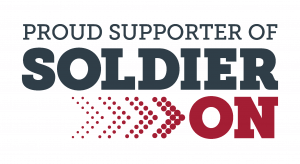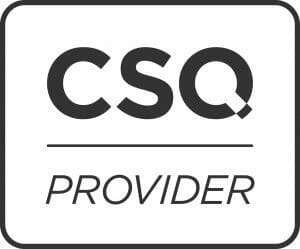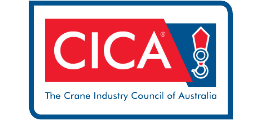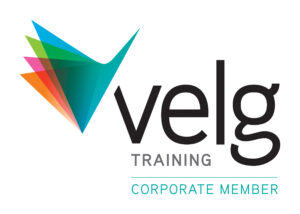Most Asked Questions
Will I get charged a reassessment fee if I fail my High Risk work assessment?
If you are unsuccessful in your HRW assessment you will need to book into complete a re-sit of the HRW assessment. The reassessment will need to be completed within 60 days of the original assessment. There will be a charge of $250.
Do you offer night or weekend courses?
Yes, we offer many courses with evening/night class options. These generally run from 3pm – 10pm. Weekend courses can also be organised for short courses.
Do you conduct training on site?
All our courses can be offered on site at your facility, provided it meets the required training and assessment criteria.
Frequently Asked Questions
Yes! Kallibr Training is a licenced, insured and accredited RTO (32365). All our instructors have completed their Certificate IV in Training and Assessment and are highly experienced, vocational trainers.
Yes, we provide high risk work training on forklift operation and provide you with a Verification of Competency. Take this VOC certificate to your local WHS regulator to apply for your forklift licence.
Every course information page will give you a detailed run-down of what to bring. We provide all general training equipment such as notes, logbooks and training plans, calculators and pens. For dogging and rigging courses, whistles will also be supplied
When you start your course, you’ll need your USI or unique student identifier number – this is part of your initial enrolment and is an Australia-wide identification number administered by the Federal Government. We can help you obtain your USI if you don’t have an existing one from previous studies or courses.
If you have existing log books or other training records, bring them along, plus any statements of attainment or current high risk work licences that are relevant to your chosen course. You’ll also need 3 forms of photo ID such as a driver’s licence or passport, Medicare card, debit card or birth certificate.
If you’re not sure, check the specific course information page or give our team a call for assistance.
Standard PPE must be worn by students at all times, including steel cap boots, long pants, long sleeves, (high vis shirt if possible otherwise long sleeves with a high vis vest) and a safety hard hat. For dogging, rigging & scaffolding courses, students are required to bring gloves and safety glasses.
High Risk Work Licence assessments can only be undertaken at the age of 18 years or over.
Yes – many of our core training courses are available online using a virtual classroom setup. Provided you have access to the internet and ideally video/camera capability, you can access our online training platform for the theory components. Our trainers are available for one-on-one Zoom meetings so that you can complete your competency assessment. For the practical component of your course, you can book an assessment with a trainer at our site or yours, or opt for a remote practical assessment at your workplace which should be provided with video evidence and undertaken under the supervision of a competent person.
Your Statement of Attainment is prepared as soon as all your key identity documents have been supplied and checked and there is no outstanding balance owing on your account. The standard time scale for issue of the document for Registered Training Organisations is 30 days but we always strive to exceed expectations and aim for 14 days. If you require the document sooner please speak to our Booking Team as soon as possible.
Yes! We offer accredited refresher courses in HSR (health and safety representative), LVR CPR (low voltage rescue and CPR) as well as non-accredited refresher courses for forklifts, cranes and gantry cranes. In addition, if you apply for a Verification of Competency but are not deemed competent, we offer the opportunity to undertake refresher training and sit for another VOC assessment.
Yes, we currently offer first aid courses in Sydney at our Arndell Park facility.
Absolutely – our experienced trainers can help you gain a full qualification, including Certificate III in Dogging, Certificate III in Rigging, and Certificate III in Civil Construction Plant Operations.
Kallibr Training offers short courses for non-electrical workers who are working in the vicinity of live wires. The Working Safely Near Live Electrical Lines & Apparatus (Electrical Spotter Course) is also known as the Energex or Ergon course and will give you essential safety observer skills.
Australian WHS regulations have changed so you no longer need a specific licence to operate an excavator. However, you do need to be deemed competent – we can help with a Verification of Competency so you can get your excavator ticket.
We’re looking forward to releasing this course shortly! Mining inductions are also known as Standard 11, S11 or GI – Generic Induction. This course is the basic requirement to work safely on a mine site.
We offer bulk discounts on group training courses – get in touch with our team for discounted group pricing.
As an accredited RTO, much of the training we conduct is eligible for course funding and subsidies. In QLD, Construction Skills Queensland (CSQ) provides short course funding and upskilling support to apprentices. The Queensland Government also provides subsidised traineeships through the Skills Assure program. Plus, the BERT fund is a joint Union and Employer initiative which provides members of the Building Employees Redundancy Trust (BERT) with funding and assistance to improve their skills. Check the individual course information pages for further details.
No, we don’t cancel courses due to low attendance unless there is a specific number of attendees required by the state WHS regulator.
The individual course information pages will specify whether you need any prior training. Generally, where courses have a basic, intermediate and advanced level, you need to work through these courses starting from the basic level. Rigging courses require you to have completed a dogging course first.
Safe Work Australia also has some basic prerequisites for students- in most cases you need to be over 18 years of age, be able to provide 100 points of identification, and can speak and understand English at a level that is appropriate for the course.
Our training calendar is fully up to date with upcoming scheduled courses in your area. If you’d like to make a group booking for your team, simply call us to arrange a suitable time.
Absolutely, provided the site can provide access to suitable compliant plant and equipment required to undertake the VOC, we are able to quote for Australia wide assessment.
VOCs are undertaken to verify your existing level of competency and are therefore conducted without any training or preparation. It is considered that current licenced, ticketed or competent employees and contractors have the required knowledge and skills to complete the assessment.
Any person deemed not yet competent will be offered the opportunity to undertake refresher training, and undertake another VOC assessment (which may attract an additional cost).
You’ll need to check with your accountant but often workplace training can be claimed as a tax deduction.
Although not mandatory, many worksites require any person working from an EWP (elevating work platform) to have undergone relevant height safety training.
State WHS regulators require some form of proof that the operator has been trained in the safe use of an elevating work platform (EWP). Verbal instruction is not an effective method of training as it lacks proof of training evidence. The EWPA Yellow Card Trained Operator Licence provides adequate evidence of training and helps employers and workers comply with their safety obligations.
The EWPA suggests that safety harnesses are not required on scissor lifts unless a hazard assessment shows there is a risk of falling. EWP manufacturers are not required to fit certified harness attachment points on scissor lifts, as per the Australian Standard AS/NZS1418.10. This is a clear indication that provided the EWP is used and maintained as per the manufacturer’s recommendations, there is no requirement for a harness to be worn. The platform guard and handrails are the primary sources of fall protection for operators.
A dogger or dogman is required when selecting and inspecting lifting equipment; determining sling WLL when angle factors are applied; determining suitable lifting points and slinging & directing a load when it is out of the crane operator’s view.
If the vehicle loading crane, eg: a Hiab or Palfinger, has a lifting capacity under 10 metre tonnes, duty of care training is sufficient. If the lifting capacity is equal to or more than 10 metre tonnes, a High Risk Work licence class CV is required. Metre Tonnes can be calculated by multiplying the lifting capacity with the specified reach. ie: The VLC can lift 1.3 tonnes at a distance of 7 metres: 1.3t x 7m = 9.1 metre tonnes.
Fast track your career – book a training course with Kallibr Training




